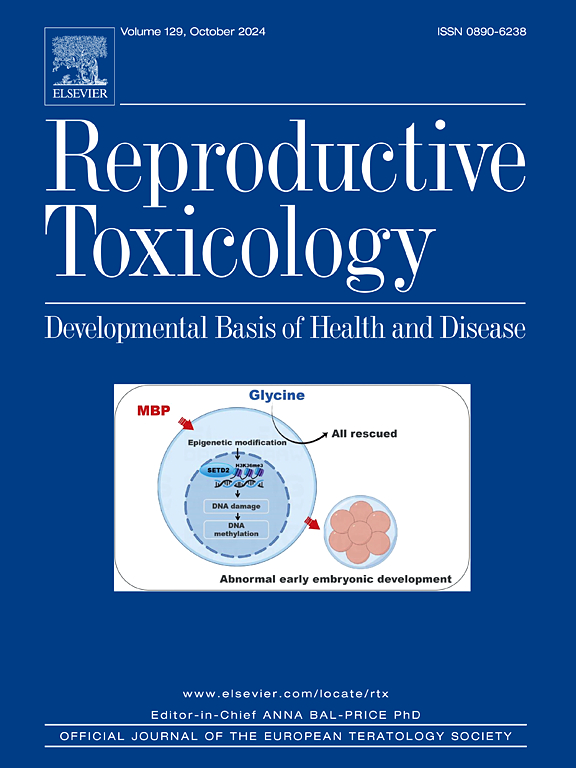空气污染对精子DNA甲基化的影响。
IF 3.3
4区 医学
Q2 REPRODUCTIVE BIOLOGY
引用次数: 0
摘要
许多环境因素已被证明会影响精子表观基因组。空气污染是当今世界最大的健康和环境危害之一,与许多现代疾病有关。最近,空气污染已被证明会改变一些身体组织的甲基化特征,这表明空气污染也可能影响精子表观基因组。本实验旨在分析盐湖谷的季节性空气污染如何影响精子中的DNA甲基化模式,并通过DNA甲基化来建立空气污染与精子表观遗传健康之间的关系。在犹他大学男科诊所进行精液分析的74个个体的精子DNA甲基化模式进行了评估,使用Illumina人类甲基化epic头芯片阵列。根据世卫组织第五版人类精液特征参考值,所收集的每个精液样本都被认为是正常的。比较了来自盐湖谷的两个样本组,城市冬季(UW, n=20),城市夏季(US, n=21),以及瓦萨奇山脉以东的两个样本组,农村冬季(RW, n=19)和农村夏季(RS, n=14),以评估空气污染对精子DNA甲基化模式的影响。由于季节倒转,与夏季相比,城市冬季的特点是空气污染增加。因此,UW样本组被指定为治疗组,其余三组(US, RW, RS)被指定为对照组。我们使用滑动窗口方法进行了多个差异甲基化分析,该方法利用了USeq软件包。首先进行了UW与US的滑动窗口分析,然后进行了UW与RW和RS的验证性分析。USeq分析的输出使用多种工具进行评估,包括斯坦福大学GREAT分析和精子关键启动子区域甲基化不稳定性分析。滑动窗口分析确定了UW组和US组之间的6个差异甲基化区(DMRs) (Wilcoxon FDR≥40,对应的p值为~0.0001)。这6个区域中的3个通过UW与RS/RW的第二次验证分析得到证实(Wilcoxon FDR≥20,p值)本文章由计算机程序翻译,如有差异,请以英文原文为准。
The impact of air pollution on sperm DNA methylation
A number of environmental factors have been shown to impact the sperm epigenome. Air pollution is one of the largest health and environmental hazards in the world today and has been implicated in many modern diseases. Recently, air pollution has been shown to alter methylation signatures in some body tissues, indicating that air pollution may also affect the sperm epigenome. The present experiment was conducted to analyze how seasonal air pollution in the Salt Lake Valley may impact DNA methylation patterns in sperm and to establish a relationship between air pollution and sperm epigenetic health as measured by DNA methylation. Sperm DNA methylation patterns were assessed in 74 individuals, who presented at the University of Utah Andrology Clinic for semen analysis, using the Illumina Human MethylationEPIC BeadChip array. Each semen sample collected, as per the fifth edition of WHO reference values for human semen characterization, was deemed normal. Two sample groups from the Salt Lake Valley, Urban Winter (UW, n = 20), Urban Summer (US, n = 21), and two sample groups east of the Wasatch mountains, Rural Winter (RW, n = 19) and Rural Summer (RS, n = 14), were compared to assess the effect of air pollution on sperm DNA methylation patterns. Due to seasonal inversions, urban winters are characterized by increased air pollution compared to summer months. Therefore, the UW sample group was designated as treatment and the three remaining groups (US, RW, RS) were designated as control. We conducted multiple differential methylation analyses using a sliding window approach which utilized the USeq software package. A sliding window analysis of UW versus US was conducted first, followed by a confirmatory analysis comparing UW versus RW and RS. Outputs from the USeq analysis were assessed using several tools including the Stanford GREAT analysis and an analysis of methylation instability at key promoter regions in sperm. The sliding window analysis identified six differentially methylated regions (DMRs) between the UW and US groups (Wilcoxon FDR ≥ 40, corresponding p-value of ∼0.0001). Three of these six regions were confirmed with the second confirmatory analysis of UW versus RS/RW (Wilcoxon FDR ≥ 20, p-value<0.01). According to a GREAT analysis, each of the identified regions exhibited multiple gene ontology associations. Air pollution subtly alters DNA methylation in sperm, indicating that certain regions of the sperm epigenome may be susceptible to air pollution-induced modification with possible implications for reproductive and offspring health.
求助全文
通过发布文献求助,成功后即可免费获取论文全文。
去求助
来源期刊

Reproductive toxicology
生物-毒理学
CiteScore
6.50
自引率
3.00%
发文量
131
审稿时长
45 days
期刊介绍:
Drawing from a large number of disciplines, Reproductive Toxicology publishes timely, original research on the influence of chemical and physical agents on reproduction. Written by and for obstetricians, pediatricians, embryologists, teratologists, geneticists, toxicologists, andrologists, and others interested in detecting potential reproductive hazards, the journal is a forum for communication among researchers and practitioners. Articles focus on the application of in vitro, animal and clinical research to the practice of clinical medicine.
All aspects of reproduction are within the scope of Reproductive Toxicology, including the formation and maturation of male and female gametes, sexual function, the events surrounding the fusion of gametes and the development of the fertilized ovum, nourishment and transport of the conceptus within the genital tract, implantation, embryogenesis, intrauterine growth, placentation and placental function, parturition, lactation and neonatal survival. Adverse reproductive effects in males will be considered as significant as adverse effects occurring in females. To provide a balanced presentation of approaches, equal emphasis will be given to clinical and animal or in vitro work. Typical end points that will be studied by contributors include infertility, sexual dysfunction, spontaneous abortion, malformations, abnormal histogenesis, stillbirth, intrauterine growth retardation, prematurity, behavioral abnormalities, and perinatal mortality.
 求助内容:
求助内容: 应助结果提醒方式:
应助结果提醒方式:


